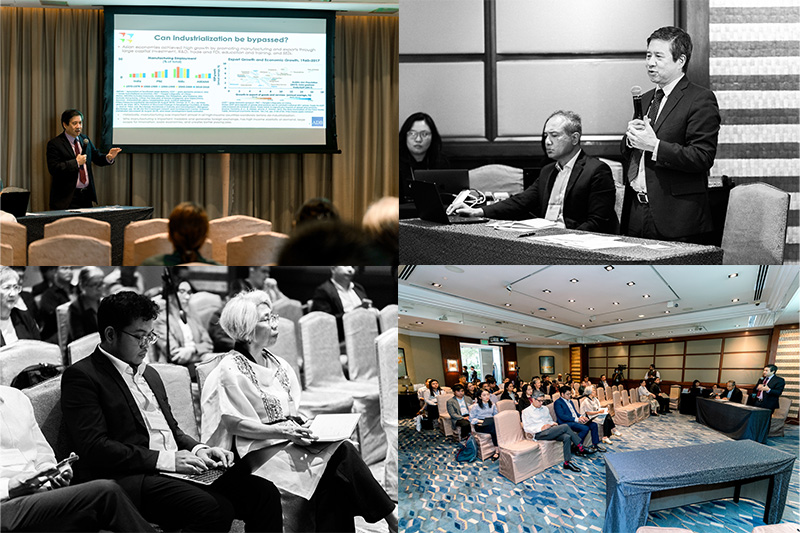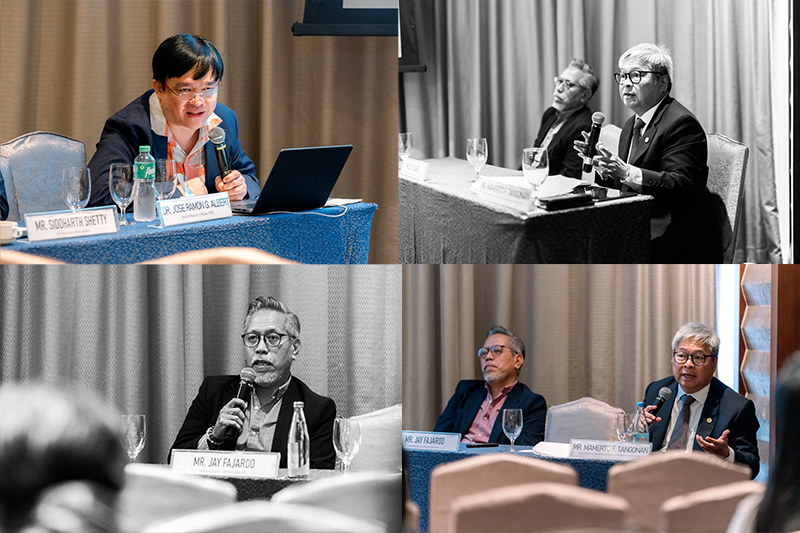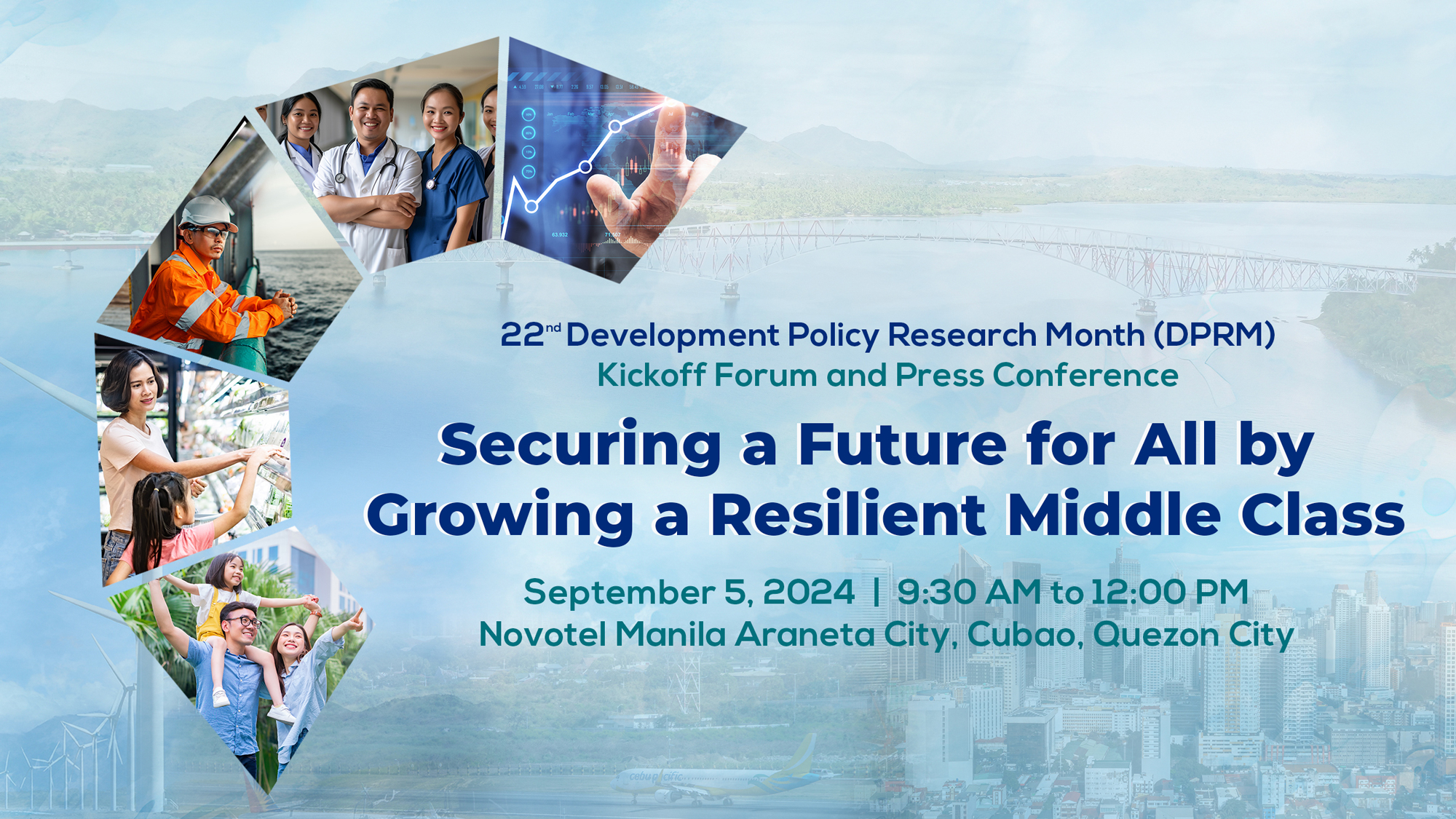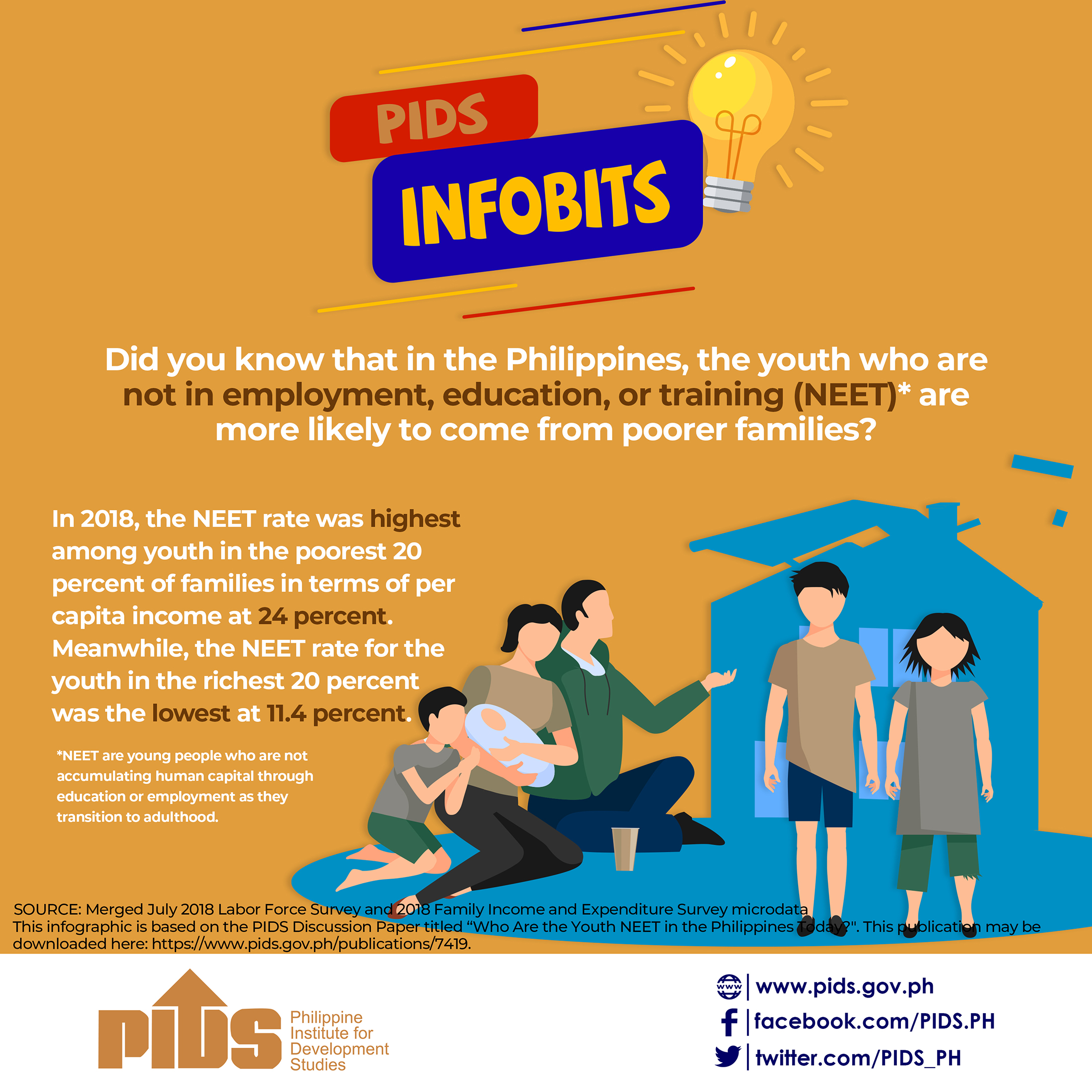Two weeks ago, we wrote an article that espoused a definition of the middle (income) class anchored on official poverty line thresholds. Those who are middle class have per capita incomes between four to ten times that of the poverty line.
This means that a household of five persons would be considered middle class if its total monthly family income in 2012 ranged from about four times the government’s official poverty line, i.e., about 30 thousand (31,580) peso to ten times the poverty line, i.e. nearly 80 thousand (78,895) pesos. We mentioned that in 2012, there were about an estimated 3.6 million households.
This article caught the attention of Albay Governor Joey Salceda, who carefully examines statistics. Governor Salceda wanted more information on the number of households for these income classes, as the article only described this information for the two extremes: the rich, the poor, as well as the middle class.
While we answered Governor Salceda’s question on his Facebook post, we opted to give this clarification to the larger netizen audience, as well as extra descriptions of the middle class.
Income classes revisited
In our last article, we categorized the entire income distribution into seven classes: the poor, the lower income class (but not poor), the lower middle class, the middle class, the upper middle class, the upper income class (but not rich), and the rich.
Those in the lower income class (but not poor) are of a considerable size. The lower middle class, middle class and upper class have a combined strength of 45.8 percent of total households, and two thirds (65.6 percent) of total household income.
In contrast, the poor and the lower income class makes up more than half of households (52.7 percent, or 11.3 million households), and have a quarter share (23.1 percent) of total household income in the country. At the other end of the spectrum, households in the upper income (but not rich) and the rich classes comprise only 1.5 percent of total households, and yet they have a share of 11.4 percent of total household income.
Table 1. Income Classes in the Income Distribution, Income Thresholds and Sizes of Income Classes in 2012
Income Class Definition Range of Monthly Family Incomes (for a Family Size of 5 members) Size of Class (i.e. Number of Households
Poor Per capita income less than official poverty threshold Less than PHP 7,890 per month 4.2 million
Low income (but not poor) Per capita incomes between the poverty line and twice the poverty line Between PHP 7,890 to PHP 15,780 per month 7.1 million
Lower middle income Per capita incomes between twice the poverty line and four times the poverty line Between PHP 15,780 to PHP 31,560 per month 5.8 million
Middle class Per capita incomes between four times the poverty line and ten times the poverty line Between PHP 31,560 to PHP 78,900 per month 3.6 million
Upper middle income Per capita incomes between ten times the poverty line and fifteen times the poverty line Between PHP78,900 to PHP 118,350 per month 470 thousand
Upper income (but not rich) Per capita incomes between fifteen times the poverty line and twenty times the poverty line Between PHP 118,350 to PHP 157,800 170 thousand
Rich Per capita incomes at least equal to twenty times the poverty line At least PHP 157,800 150 thousand
Note: Author’s calculations on data sourced from 2012 Family Income and Expenditure Survey (FIES), Philippine Statistics Authority
Where do the middle class reside?
The biggest concentration of the middle class is in Luzon, especially in Metro Manila (which has a fourth of them), and neighboring CALABARZON and Central Luzon (see Table 2). In total, these three regions have more than half of the middle class.
The rich also reside in the same regions, while in contrast, the biggest concentration of the poor are in Central Visayas, Bicol, Western Visayas and Mindanao.
Low income classes that are non-poor, but clearly more vulnerable to becoming poor than other non-poor classes are predominant in Calabarzon, Central Luzon and Metro Manila.
Table 2. Income Distribution by Income Group and by Region, 2012
Region/Group Poor Low income (but not poor) Lower middle income Middle income Upper middle income High income (but not rich) Rich
I - Ilocos Region 3.7 6.2 5.5 4.4 4.3 3.9 3.5
II - Cagayan Valley 3.1 4.5 3.4 2.8 3.1 2.3 2.1
III - Central Luzon 5.7 11.3 14.4 12.4 9.0 10.5 8.8
IVA - Calabarzon 6.1 13.2 18.8 18.8 17.1 17.6 15.4
IVB - Mimaropa 3.6 3.3 2.7 2.4 2.0 1.7 3.5
V - Bicol Region 8.9 6.4 3.4 3.1 3.1 2.0 2.9
VI - Western Visayas 8.7 8.1 6.3 6.9 7.4 6.7 7.2
VII - Central Visayas 9.6 7.3 7.1 5.6 6.1 6.2 4.4
VIII - Eastern Visayas 8.0 4.2 2.6 2.5 2.8 4.0 3.4
IX - Western Mindanao 6.1 4.0 2.4 2.1 1.8 3.0 1.4
X - Northern Mindanao 7.6 4.8 3.2 3.0 3.1 3.4 4.4
XI - Southern Mindanao 6.4 5.6 4.5 3.6 3.0 4.4 1.8
XII - Central Mindanao 8.7 4.7 2.9 2.9 2.3 3.0 0.9
National Capital Region 1.8 8.7 18.4 25.6 31.5 27.1 36.6
Cordillera Administrative Region 1.6 1.6 1.8 2.1 2.2 1.6 2.3
Autonomous Region in Muslim Mindanao 6.4 3.1 1.0 0.2 0.1 0.4 0.0
CARAGA 4.0 2.8 1.7 1.5 1.3 2.1 1.4
In addition, as is to be expected, being middle class is an urban phenomenon with about two third of the middle class residing in urban areas (see Figure 1) while the poor and low income families are more concentrated in rural areas. Similarly, high income and rich families they tend to be more concentrated also in urban areas, just like the lower middle, middle, and upper middle income classes.
Figure 1. Income Distribution by Income Group and by Urban/Rural Classification
Note: Authors’ calculations on data sourced from the 2012 FIES, Philippine Statistics Authority
Family sizes of the middle class
Compared to poor and low income groups, the middle class tends to have a smaller family size, whether we consider data from 2012, or even earlier years (such as 2009 and 2006) when the Family Income and Expenditure Survey was conducted (Figure 2).
On average, middle class household comprises four members, lower than an average family size of six among poor households. While this does not mean that family size causes poverty, but it suggests that those with low income may be further weakening their purchasing power with more household members to support.
Figure 2. Average Family Size by Income Group, 2006, 2009 and 2012
Note: Authors’ calculations on data sourced from the 2006, 2009 and 2012 FIES, Philippine Statistics Authority
Sources of income
Household heads of the middle class tend to rely more on salaried jobs (Figure 3), and this may be the reason why the middle class accounts for the largest share to total income tax payments as well as to total taxes (Figure 4).
Figure 3. Major Source of Income by Income Group, 2012
Note: Authors’ calculations on data sourced from the 2012 FIES, Philippine Statistics Authority
Figure 4. Share to Total Income Tax and Total Tax by Income Group, 2012
Note: Authors’ calculations on data sourced from the 2012 FIES, Philippine Statistics Authority
Profile of OFW families
Overseas Filipino workers (OFW) have always been considered the new heroes of the country, having contributed regularly to economic performance.
Figure 5 shows that a majority of OFWs (a third of them) belong to families in the middle class, particularly the lower middle class, while the low income and middle class have a quarter each of these OFWs.
Figure 5. Families of Overseas Filipino Workers (OFWs) by Income Group, 2006-2012
Note: Authors’ calculations on data sourced from the 2006, 2009 and 2012 FIES, Philippine Statistics Authority
Income inequalities are very prevalent in the country, i.e. there are gross disparities in incomes among different income classes. What the profile of OFW families suggests is that the increasing wealth of our taipans and our economic growth is being built by the toil and sweat of people at the middle and lower income classes.
Isn’t it time for our billionaires to become more responsible and ensure shared prosperity, or at least give back a bit of those profits to families of OFWs who have built these fortunes?
Isn’t it time for the taipans to invest in creating more and better quality jobs, than the current jobs they offer up to five months?
Isn’t it time for government to use its persuasive power on our taipans to do so?
A research paper by Dabla-Norris et al. released by the International Monetary Fund shows that an increase in the income share of the poor and the middle class is associated with higher economic growth, ceteris paribus.
In contrast, economic growth deteriorates when the income share of the rich increases. Isn’t it time we seriously address income inequalities? Sister Stella L. once said "kung di ngayon, kailan pa?” — Rappler.com
Dr. Jose Ramon "Toots" Albert is a professional statistician. He is a Senior Research Fellow of the government’s think tank Philippine Institute for Development Studies(PIDS), and the president of the country’s professional society of data producers, users and analysts, the Philippine Statistical Association, Inc. for 2014-2015.
Raymond E. Gaspar is a Research Specialist at Philippine Institute for Development Studies (PIDS) and is currently a Masters in Development Economics student at the UP School of Economics.
Martin Joseph M. Raymundo (not in photo) is a Research Analyst at the Philippine Institute for Development Studies (PIDS).
Who are the middle class?












